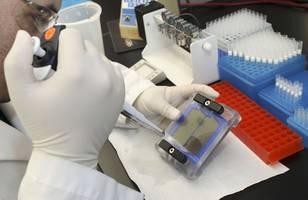
Breaking News
Chicago Homicide Rate: 2025 Analysis
 Tennessee Sues Roblox, Says Game is a 'Gateway for Predators' Targeting Children
Tennessee Sues Roblox, Says Game is a 'Gateway for Predators' Targeting Children
 Kushner and Witkoff Reportedly Draft $112B Plan to Turn Gaza Into 'Smart City'...
Kushner and Witkoff Reportedly Draft $112B Plan to Turn Gaza Into 'Smart City'...
 Christmas in Venezuela: What It Was Like After Socialism Destroyed the Country
Christmas in Venezuela: What It Was Like After Socialism Destroyed the Country
Top Tech News
 Perfect Aircrete, Kitchen Ingredients.
Perfect Aircrete, Kitchen Ingredients.
 Futuristic pixel-raising display lets you feel what's onscreen
Futuristic pixel-raising display lets you feel what's onscreen
 Cutting-Edge Facility Generates Pure Water and Hydrogen Fuel from Seawater for Mere Pennies
Cutting-Edge Facility Generates Pure Water and Hydrogen Fuel from Seawater for Mere Pennies
 This tiny dev board is packed with features for ambitious makers
This tiny dev board is packed with features for ambitious makers
 Scientists Discover Gel to Regrow Tooth Enamel
Scientists Discover Gel to Regrow Tooth Enamel
 Vitamin C and Dandelion Root Killing Cancer Cells -- as Former CDC Director Calls for COVID-19...
Vitamin C and Dandelion Root Killing Cancer Cells -- as Former CDC Director Calls for COVID-19...
 Galactic Brain: US firm plans space-based data centers, power grid to challenge China
Galactic Brain: US firm plans space-based data centers, power grid to challenge China
 A microbial cleanup for glyphosate just earned a patent. Here's why that matters
A microbial cleanup for glyphosate just earned a patent. Here's why that matters
 Japan Breaks Internet Speed Record with 5 Million Times Faster Data Transfer
Japan Breaks Internet Speed Record with 5 Million Times Faster Data Transfer
Microsoft stored an OK Go music video in strings of DNA

Hundreds of years from now, today's DVDs, web servers, and flash drives will all be long dead. But one copy of a music video — for alternative rock band OK Go's song "This Too Shall Pass" — could still be playing. The Rube Goldberg-inspired video is part of a 202-megabyte cache of data that Microsoft and the University of Washington say they've written to DNA storage — the largest known DNA storage trove created to date.
This DNA data storage project is a research partnership between Microsoft and researchers at the University of Washington's computer science and engineering department, with help from startup Twist Bioscience. Its goal is to advance the technology that could one day make synthetic strands of DNA a viable alternative to conventional hard drives, optical disks, and other storage methods. DNA storage could offer a couple of major advantages over anything we have today. It can theoretically hold huge amounts of data at incredible density, and kept in cool, dry, and dark conditions, it could maintain its integrity for hundreds or even thousands of years.
PREVIOUS PROJECTS ENCODED A FULL BOOK AND MARTIN LUTHER KING, JR.'S "I HAVE A DREAM"
The idea has been in the proof of concept stage for years, and so far, the information stored has been modest. In 2012, Harvard Medical School researchers stored a digital book in DNA. In 2013, the European Bioinformatics Institutecopied 739 kilobytes of sound, images, and text, including a 26-second audio clip of Martin Luther King, Jr.'s "I Have a Dream" speech. More recently, Harvard Medical School and a Technicolor research group reported storing and retrieving 22 megabytes that included French silent film A Trip to the Moon. This new work builds on previous efforts, and — possibly — marks another move toward a technology that could have real-world applications.
In order to write data to DNA, researchers translate the binary code of a file into the nucleotide molecules that form DNA's building blocks, assigning different base pairs to represent ones and zeroes. In this case, Twist Bioscience created custom strings of DNA based on the resulting patterns, encoding the OK Go video, copies of the Universal Declaration of Human Rights in different languages, the top 100 books from Project Gutenberg, and the Crop Trust seed database. Microsoft principal researcher Karin Strauss says the team picked OK Go because "they're very innovative and are bringing different things from different areas into their field, and we feel we are doing something very similar."

 Advanced Propulsion Resources Part 1 of 2
Advanced Propulsion Resources Part 1 of 2

